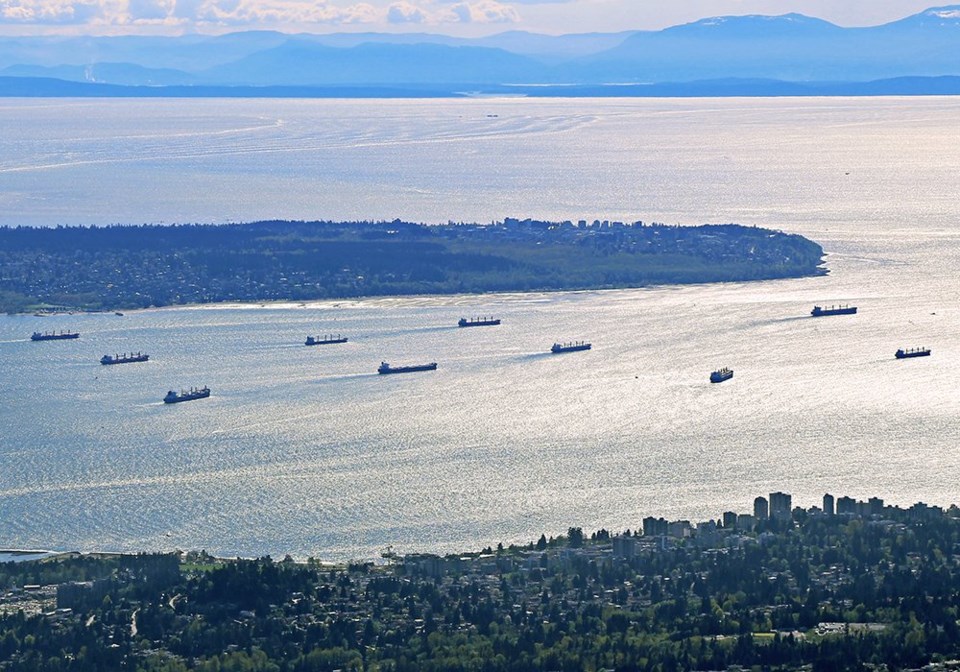WESTERN PRODUCER — Canada’s grain monitor says demurrage is adding up as vessels wait on the West Coast to be loaded, even though the 2021 crop was 40 percent smaller than the previous year.
Mark Hemmes said the rail system hasn’t delivered much grain in weeks, at least partly due to the damage from November floods. Vessels are lined up waiting, along with those that service other bulk industries and containers.
“We don’t officially publish a demurrage number until the end of the crop year, but I can tell you that there’s been serious eight figures in the last month and a half,” Hemmes told the Agricultural Producers Association of Saskatchewan’s annual meeting Jan. 17.
Hemmes said virtually no grain had moved in the previous eight to nine weeks even though the railways were able to repair lines damaged by the massive flooding within two weeks of the Nov. 15 event. The lines won’t be fully repaired until spring, so trains are running much slower.
Week 15 of the crop year was the last “normal” week, in which between 5,000 and 6,000 cars would unload. But even with the short crop, between 2,000 and 3,000 should be unloading but aren’t.
The number of vessels waiting is getting close to the three-year average and that’s not right given the size of the crop, Hemmes said. Some have been waiting for more than 45 days at a rate of about $30,000 per day.
“That vessel demurrage will clock, and it will have, ultimately, that cost come back to the producer in some way, shape or form,” he said.
Analysis of which component of the grain-handling chain has possession of the grain, and when, points to another part of the problem.
Hemmes said car cycle times have started to decrease in the last five years, but the railways’ time of possession has not.
“The amount of time that the shipper has it in its possession, meaning at the country elevator or at the port terminal, has actually decreased over that period by 21 percent while the railways’ time is actually up 30 percent. So that kind of points to us that there is an issue,” he said. “We have pointed this out in numerous different ways to the two different railways.”
Another measurement is transit time, or the time it takes to move from the country to the port. To Vancouver, transit time over the last four years has steadily increased. As well, the variability within that transit time has increased.
“In lay terms, basically what we’re finding is that the variability of that movement is ranging anywhere from 25 and as much as 40 percent,” said Hemmes.
Seven or eight days plus or minus 40 percent makes it difficult for grain companies to schedule vessels appropriately.
He also said vessel lineups start to climb when car order fulfillment rates fall. Frigid weather and COVID-related staffing issues are also factors.
A record 78.5 million tonnes produced in the last crop year, with 63.6 million tonnes moved and 44.7 million tonnes loaded on to ships, was followed by production of 47 million tonnes in 2021.
With carry forward of seven million tonnes, the supply of 54 million tonnes is equal to 2002.
Hemmes noted that 80 percent of grain moves to the West Coast, six percent to Eastern Canada by rail, three percent by truck to the United States and one percent to Mexico by rail.
He said the advent of loop track facilities in the country is boosting system productivity and car cycle times. Since spring 2020 the cycle for cars originating on loop tracks went from a high of more than 20 days to an average of 9.5 days. Both railways average 15 to 17 days per car.
This suggests the railways are probably giving preference to cars that originate on them or are destined for one of them, he said.
There are now about 6,000 of the new hopper cars with capacity of up to 105 tonnes, compared to 89 to 91 tonnes in the older models, that also improve efficiency.
Western farmers should watch for a re-introduced private member’s bill regarding anchorage, he added. The bill introduced by NDP agriculture critic Alistair MacGregor in the last Parliament died on the order paper but could come forward again. It would ban the anchorage of freighter vessels in the southern Strait of Georgia.
Hemmes said the bill would reduce the number of anchorages to about 30 percent of existing space and that would be a huge issue for all bulk exporters.
Another thing to watch is whether capital projects designed to improve congestion at the Vancouver port go ahead.




